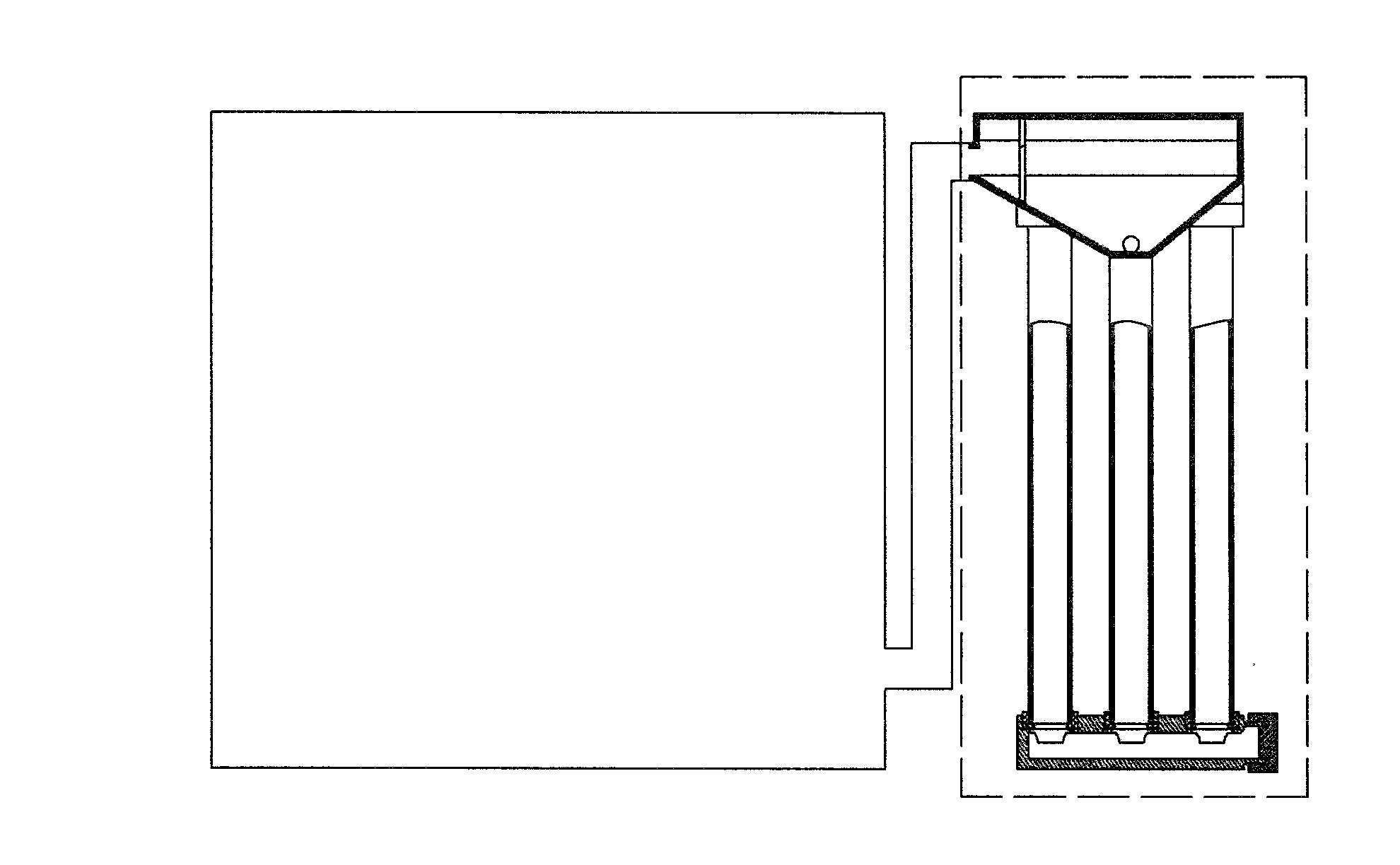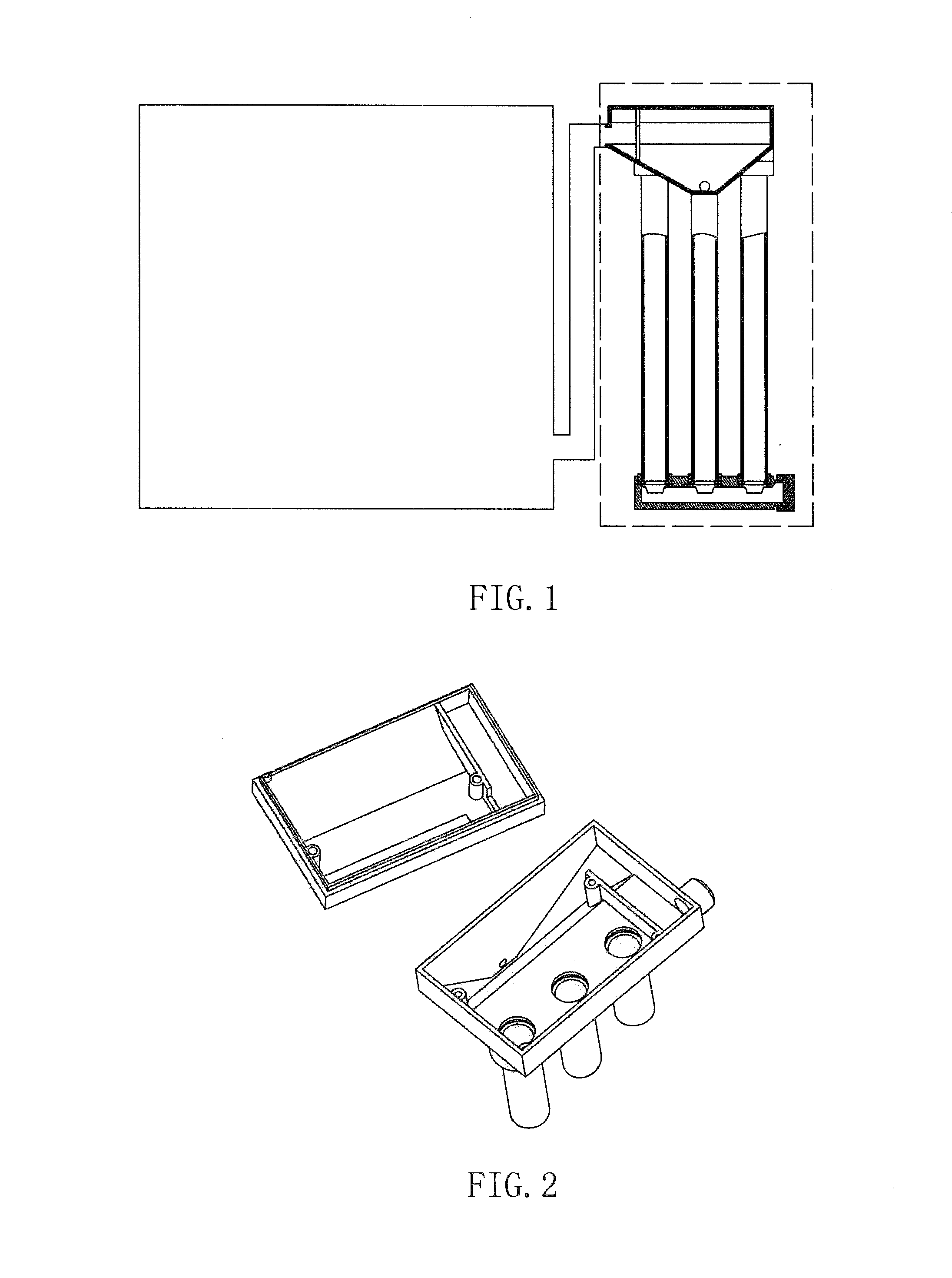Steam Generation Device and Household Electric Steam Box
- Summary
- Abstract
- Description
- Claims
- Application Information
AI Technical Summary
Benefits of technology
Problems solved by technology
Method used
Image
Examples
embodiment 1
[0044]Referring to FIG. 9 to FIG. 10 of the drawings, the household steaming device comprises an outer casing 19, a steaming chamber 18, a steam generation device 17, wherein the steam generation device 17 is disposed in the outer casing 19. When the steam generation device 17 is operating (i.e. when a door of the steaming chamber 18 is closed), the steaming chamber 18 and the steam generation device 17 is arranged to be connected by a passage V 12 to form an enclosed structure.
[0045]Referring to FIG. 3 of the drawings, the steam generation device 17 comprises a water tank 1, a steam-water separating device 4 comprising a sealing cover 41 and a base 42, a guiding valve 5, and a plurality of heat generating tubes 6. Referring to FIG. 4 of the drawings, the sealing cover 41 is provided on top of the base assembly 42, and defines a cover body 412. Referring to FIG. 7a of the drawings, the sealing cover 41 comprises a blocking panel I 410, and a guiding curve 411. Referring to FIG. 7b o...
embodiment 2
[0051]Referring to FIG. 5 and FIG. 7c of the drawings, the main difference between the second and the first embodiment described above is that the connecting tube 422 is provided on the inclined bottom wall 423. The connecting tube 422 is connected to passage IV 15 and passage III 14 (Note: passage IV 15 and passage III 14 may also be connected to form an integral passage). The intersection between the passage IV 15 and the passage III 14 is preferably positioned adjacent to the water outlet 9.
[0052]The difference in working principles between the first embodiment and the second embodiment is that when the heat generating tube 6 has heated up the water flowing therein, a predetermined amount of steam is generated. The steam is then arranged to flow in to the corresponding connecting base 424, the right cover chamber 4122 and then to the left cover chamber 4121. The steam is then arranged to flow into the air outlet 426 and enters the steaming chamber 18 through passage V 12. On the ...
embodiment 3
[0054]Referring to FIG. 6 and FIG. 7d of the drawings, the third preferred embodiment is similar to the first embodiment and the second embodiment described above, but the main difference between the third embodiment and the first / second embodiment described above is that the connecting tube 422 is absent in the base assembly 42. Passage V 12 is connected to a passage II 13 (Note: passage II 13 and passage V 12 may also be connected to form an integral passage), which is connected to passage IV 15 (Note: passage II 13 and passage IV 15 may also be connected to form an integral passage). Passage II 13 may be positioned anywhere with respect to passage V 12, but it should be positioned near the steaming chamber 18.
[0055]The working principles of the third embodiment is similar to the first embodiment and the second embodiment, the main difference being when the heat generating tube 6 has heated up the water flowing therein, a predetermined amount of steam is generated. The steam is th...
PUM
 Login to View More
Login to View More Abstract
Description
Claims
Application Information
 Login to View More
Login to View More - R&D
- Intellectual Property
- Life Sciences
- Materials
- Tech Scout
- Unparalleled Data Quality
- Higher Quality Content
- 60% Fewer Hallucinations
Browse by: Latest US Patents, China's latest patents, Technical Efficacy Thesaurus, Application Domain, Technology Topic, Popular Technical Reports.
© 2025 PatSnap. All rights reserved.Legal|Privacy policy|Modern Slavery Act Transparency Statement|Sitemap|About US| Contact US: help@patsnap.com



